Hydroponic Cucumbers - the saga continues
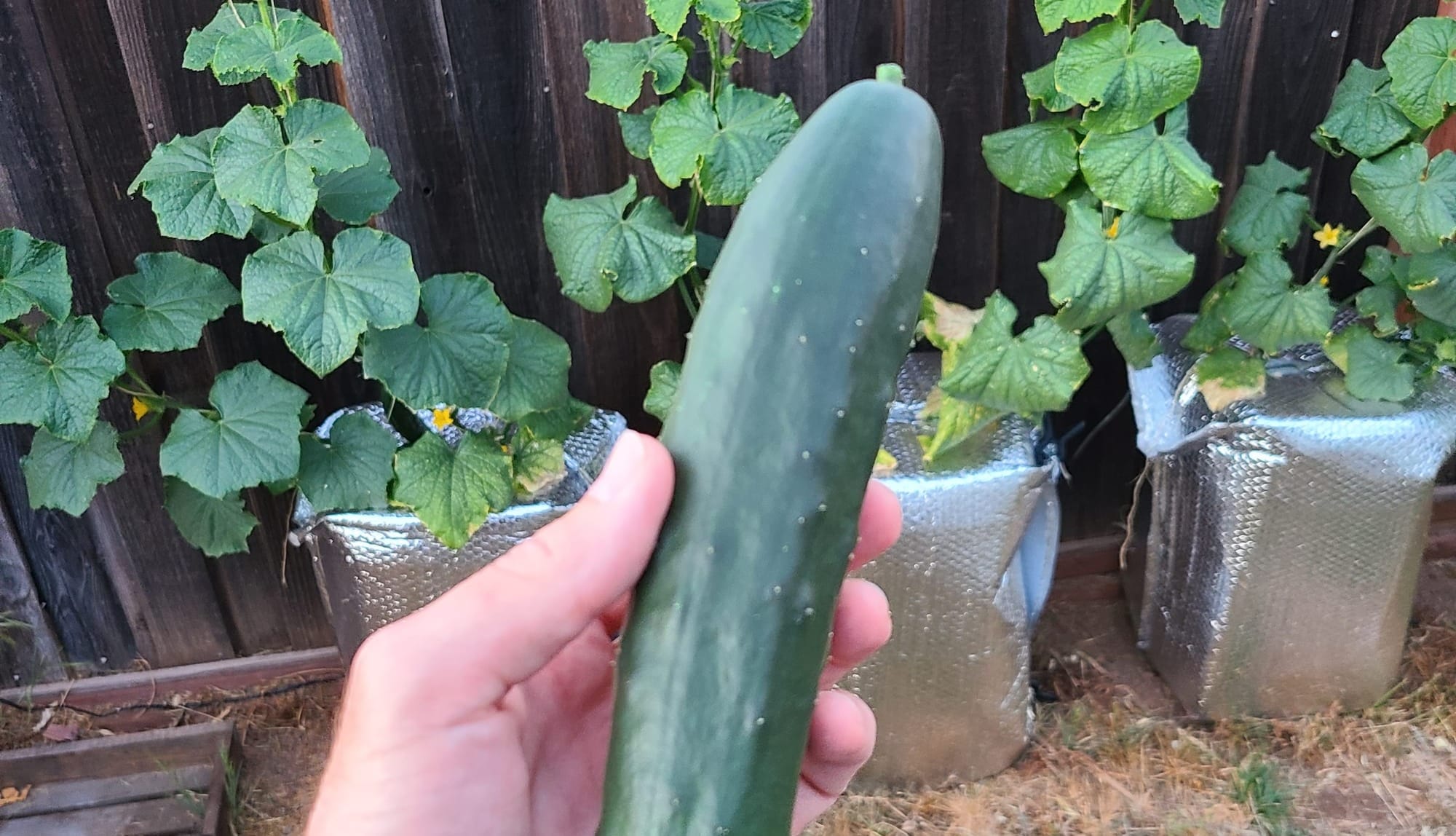
I'm well into HydroCucs 2024, so this is going to be somewhat of a slideshow and a summary of a lot of things that went wrong.
My wife really likes cucumbers but I've never succeeded in growing them in the garden. Somewhere I heard that it was "easy" to grow them hydroponically so I've spent several years now putting that to the test.
First, a summary of my failures leading up to the present:
2020:
In retrospect, doing this indoors was never a good idea. The plants do look lush and happy in the photo below ( pictured with the UV grow light off ), but regulating the ambient temperature became a problem as the summer warmed up. It easily gets 90+F in there and that just means the nutrient solution in the bucket is also that warm. Gross.
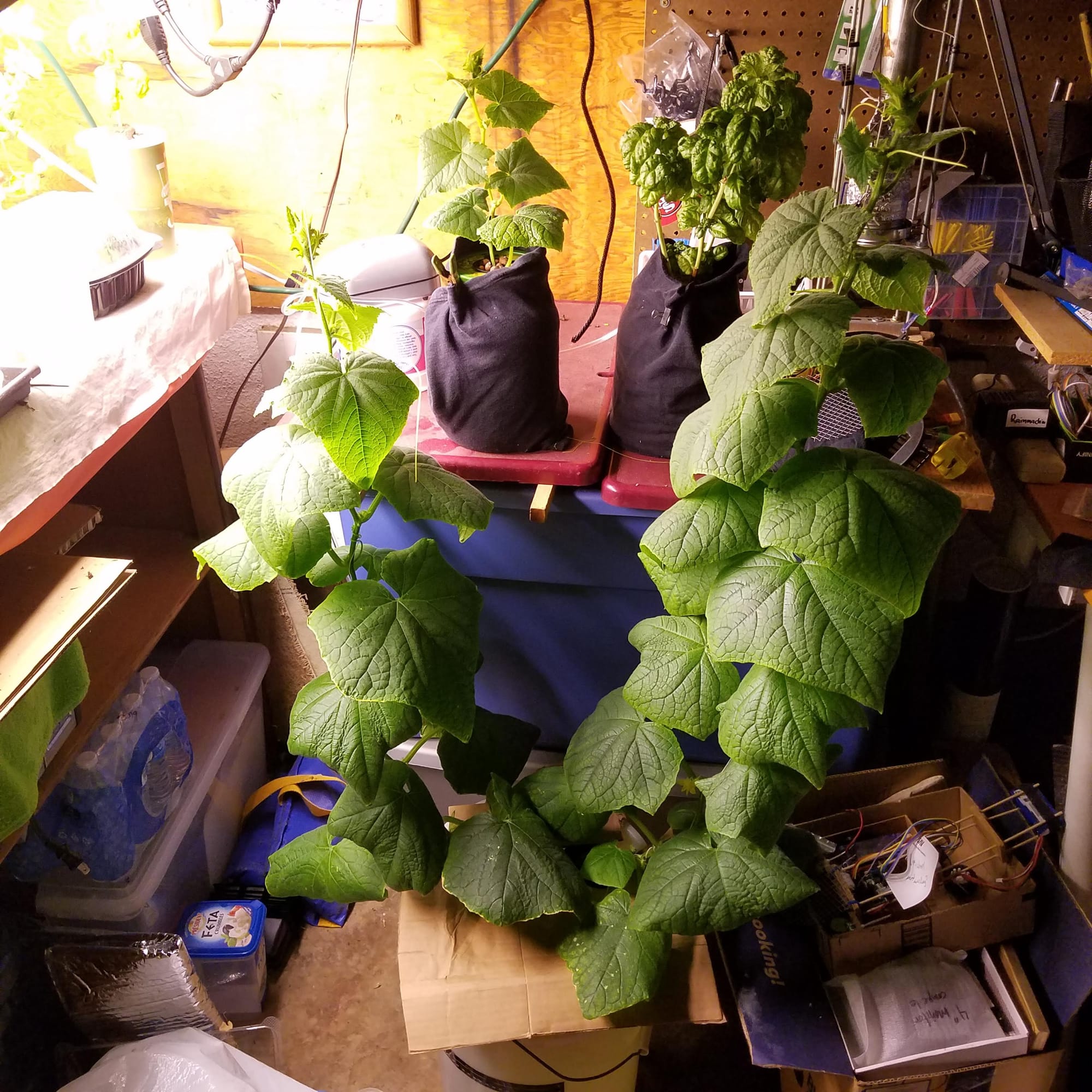
At one point I had one of the 5-gallon grow buckets wearing a T-shirt in a keg tub trying to use wicking and evaporation to cool things down. Then came the spider mites! This was something I had never had to deal with when gardening outdoors. I considered letting hundreds of lady bugs loose in my garage before realizing that I would try outdoors the next year.
However, moving outdoors sacrifices control over several variables. This is somewhat contrary to the fundamentals of hydroponics - a technique which thrives on consistency.
2021: 5 gallon buckets
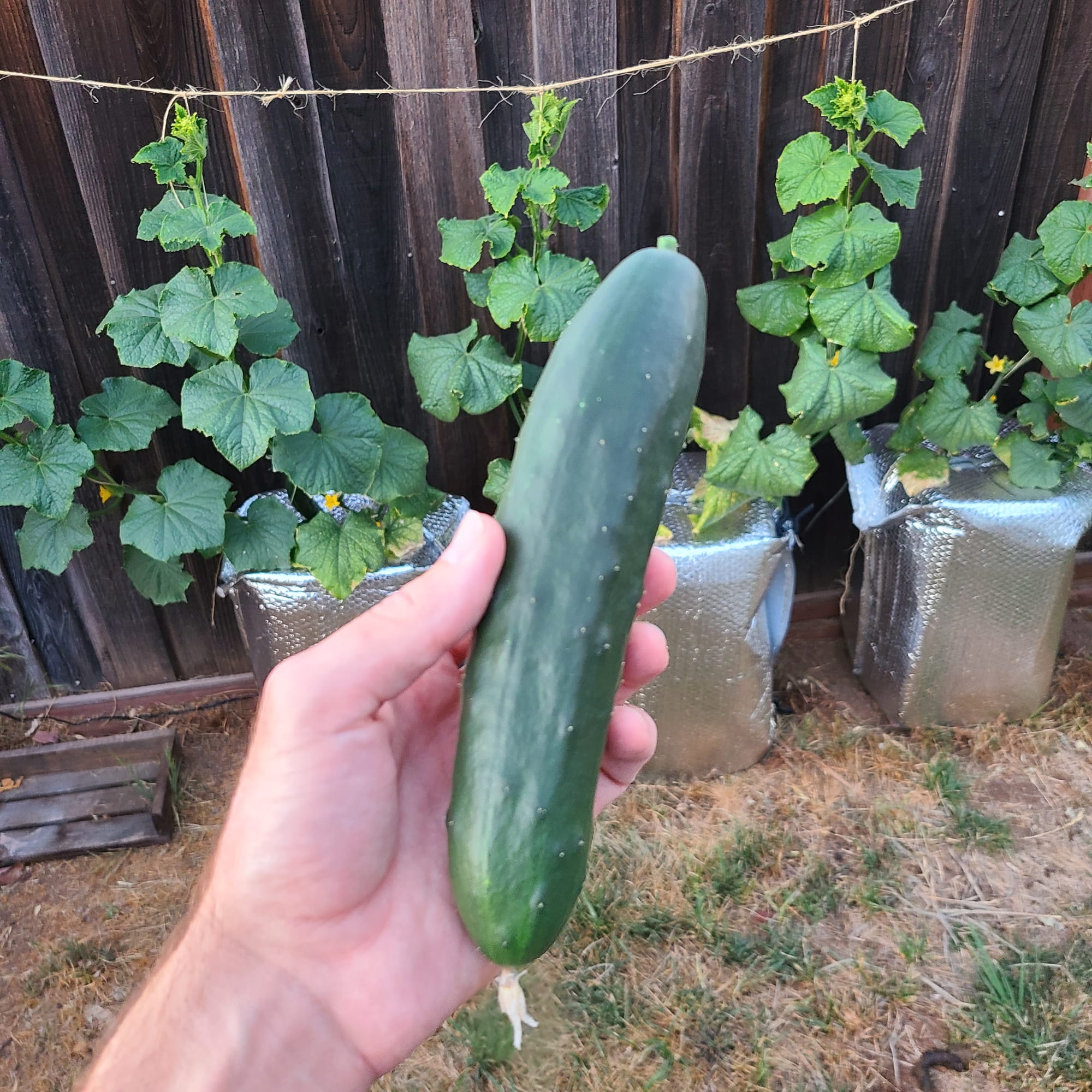
Constantly having to check and balance three buckets was a pain in the ass. Things eventually got hot and gross and conditions deteriorated:
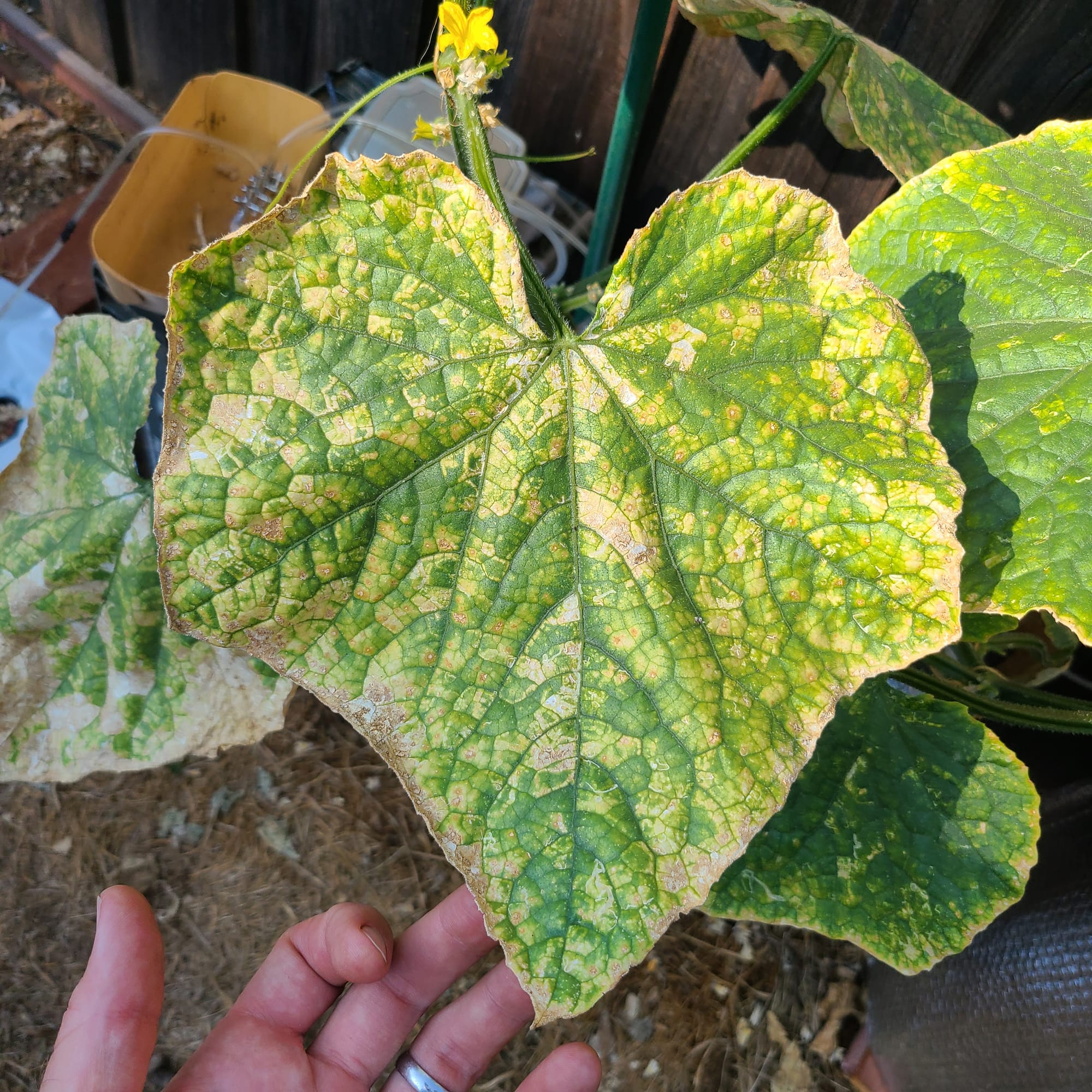
2022: NFT tube system
I thought that nutrient film technique (NFT) sounded cool and low-tech. I bought a 10' long, 4" diameter pipe and drilled some holes to hold 2 inch net cups.
I was powering a 12V DC pump all day and night with a small solar system ( 50W panel, 12Ah SLA battery ). The system was a little undersized for supporting a constant load all night long, but was actually pretty reliable.
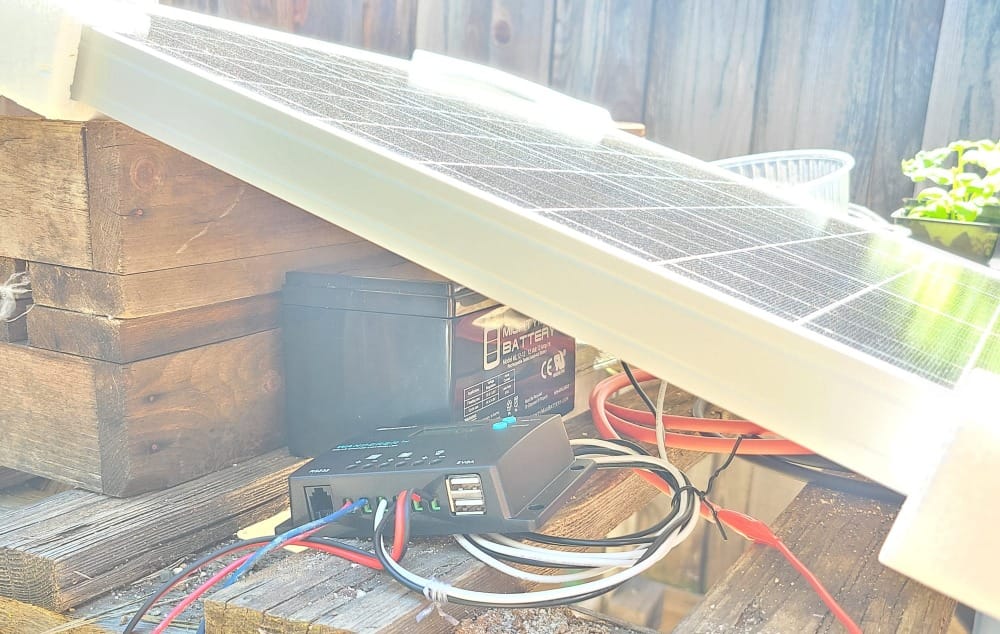
The first failure this season was due to the tiny pump being clogged by 2-3 needles from a rosemary bush. I learned to wrap the pump in a mesh bag ( and with an extra net cup over the intake ) to nearly eliminate the risk of clogs.
The second failure was ironically due to a power outage after I had switched from solar power to hardwired power ( in order to also power an air compressor ).
Two rounds of cucumbers dead.
2023: Dutch Buckets
In 2023 I wanted to build something like what is shown below, the alluring "Dutch Bucket" setup that I saw people doing on YouTube. Surely this was the solution to my struggles to grow hydroponic cucumbers: each plant just needed more space.

I figured that it would be easy to adapt my NFT pipe into a drain/return . My thinking was that the extra water trapped in each bucket would be insurance against pump/power failures.
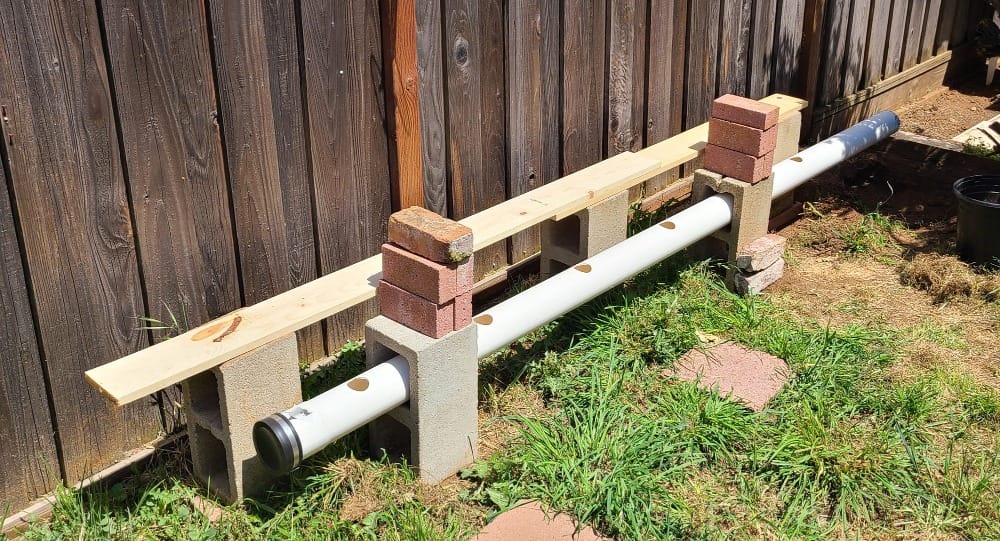
Higher flow rate requires an AC pump and larger tubing. A 27 gallon tote serves as the reservoir in anticipation of some thirsty plants. The larger volume should keep it more stable day-to-day.
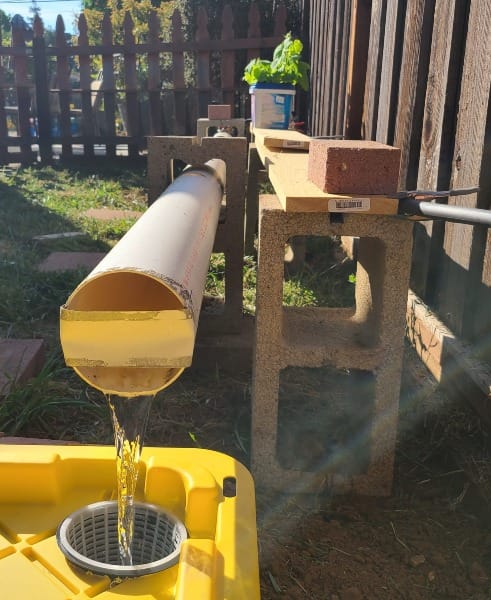
The reservoir itself is buried about 2/3 of the way into the ground with extra earth piled up around it for insulation. The earth ( Earth? ) is like a heat sink for the nutrient solution, which heats up slightly as it travels out and back down the tube.
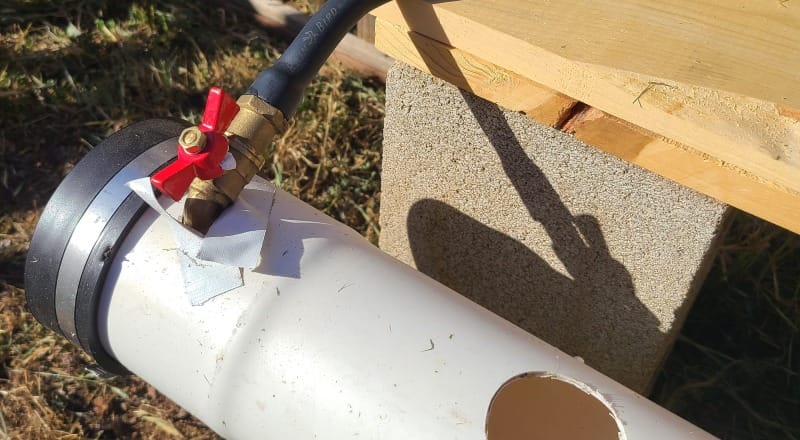
The majority of the water flowed through the system and directly to the drain pipe, but the valve allowed for adjusting the back-pressure that forced water out the six emitters and through the buckets.
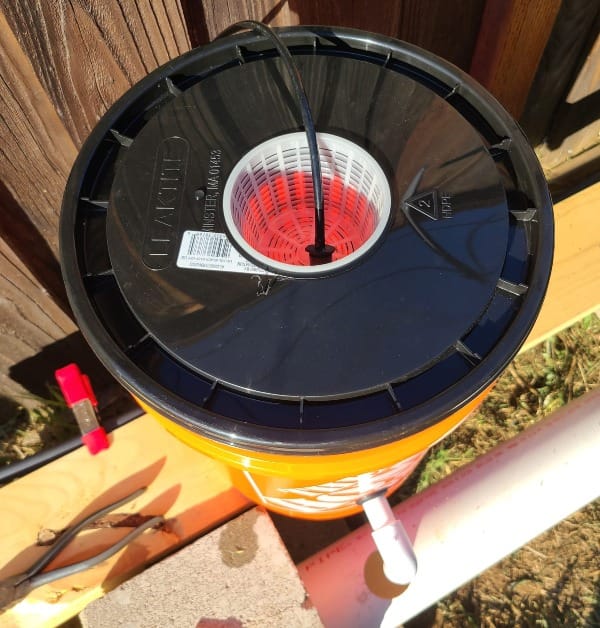
This is significantly more complex than NFT in a tube. There are many more parts, meaning that there are lot more places that can leak. Each bucket has three PVC pipes, two elbows, a gasket, a dripper...
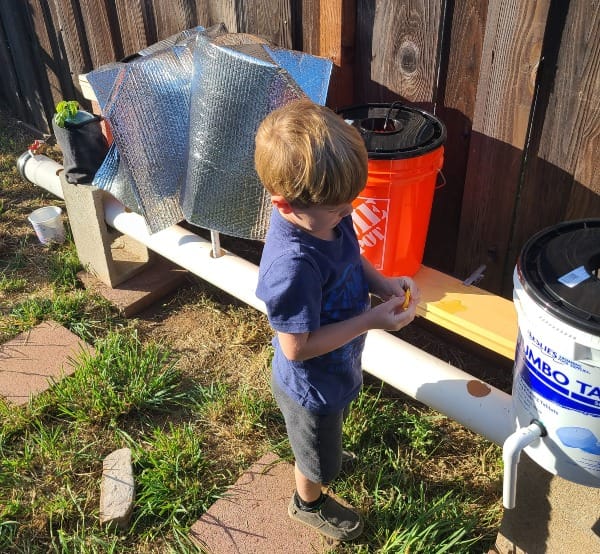
Once all of that was not slowly leaking out my precious nutes, I put plants into the system and hoped for the best.
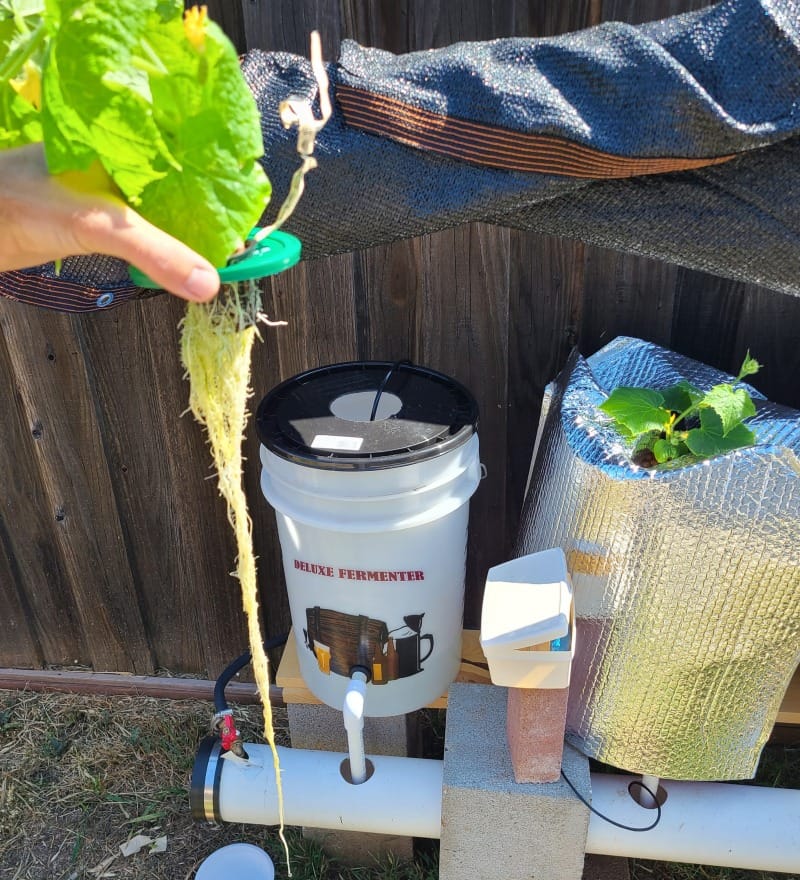
Notice the shade cloth? That's foreshadowing in this tragedy.
Show me the data
Last year I also setup the temperature monitoring station. Once I realized that temperature was going to be a struggle I knew that logging some metrics was necessary before being able to experiment with and evaluate solutions. It sends two temperature readings on a regular interval into my home MQTT server / Grafana stack.
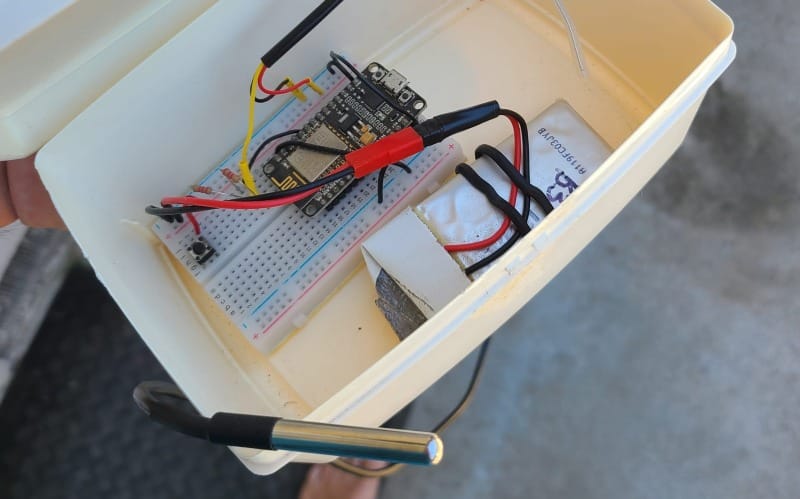
It runs on a battery. This single 1500mAh lipo cell will last a few days, but mileage varies mostly due to:
1) The reporting interval. I think I'm doing every 20 minutes
2) Length of the duty cycle, or how long it takes to power up, connect to wifi, read sensors and broadcast an MQTT packet before going back to sleep. The fastest I've engineered is 5 seconds, but it also includes...
3) Time taken connecting to the wifi. This varies significantly when pushing the range. I came to the conclusion that after 90 seconds of trying, it was highly unlikely to connect and taxing on the battery.

Ultimately I was interested in how the temperature of the liquid in the buckets and reservoir measured relative to the air temperature. I assumed that if I could keep direct sunlight off the system that it shouldn't be getting warmer than the air temperature, but the data showed otherwise:

I tried all kinds of crazy stuff to keep the temperatures down. I tried freezing huge ice cubes of nutrient solution to add to the reservoir on hot days. I even experimented with a thermal electric cooler ( for cooling CPUs ) to keep the nutrient solution cool, but it wasn't nearly worth the complexity
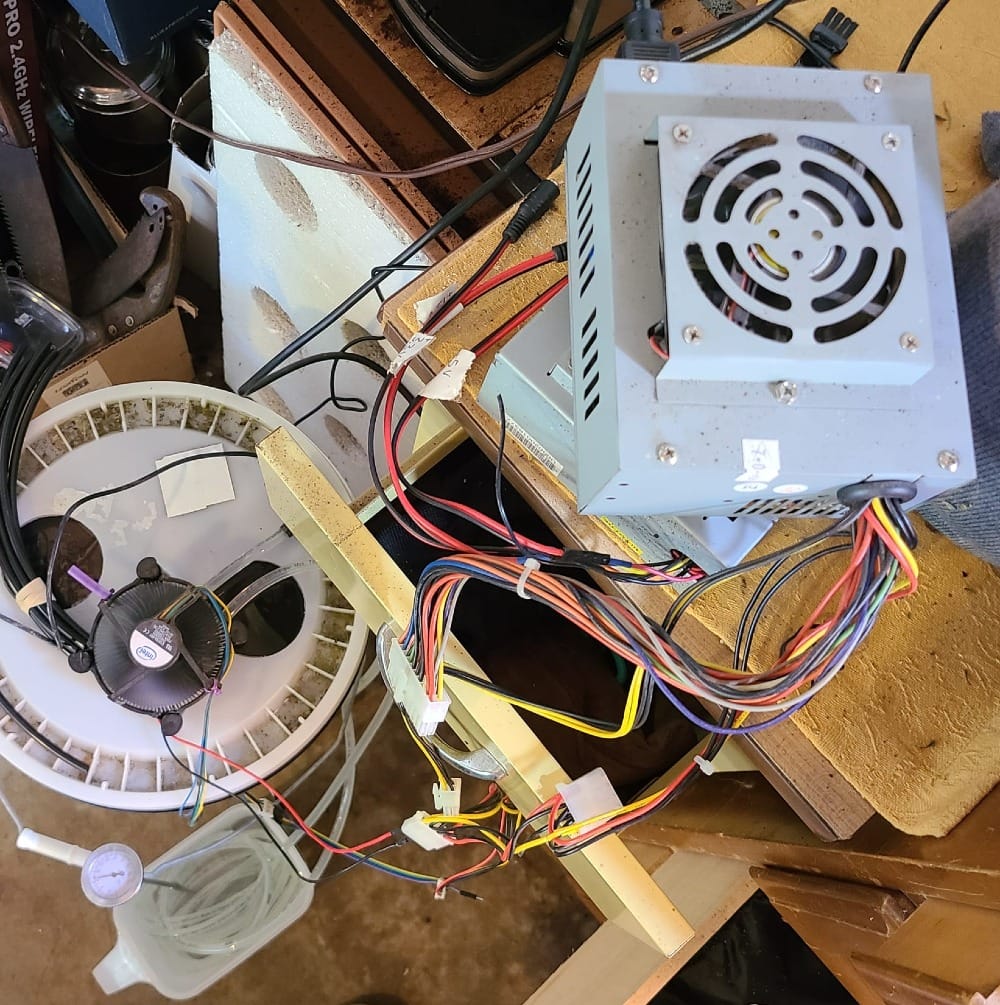
I have no idea how anybody keeps a warm and humid bucket from getting funky.
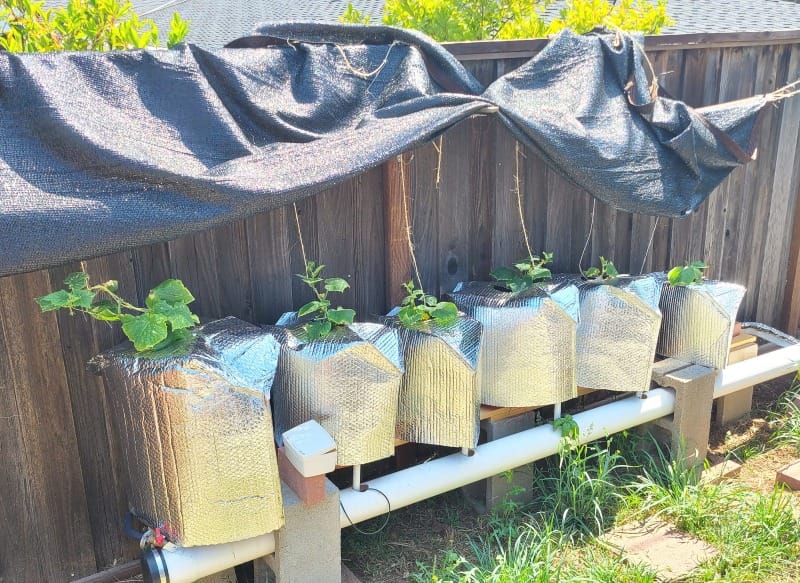
The leaves tell you everything there is to know about the plant's health. The color, edges, and flexibility are all worth noting. Since the inputs ( the nutrient solution ) can be modified much more effectively than dirt, any changes can be evaluated by monitoring foliage.
So, 1) look at leaves, 2) measure and adjust nutrient solution (gradually) and, 3) repeat.
I kept having the same experience: Everything would be going fine for awhile and then it would gradually get worse.
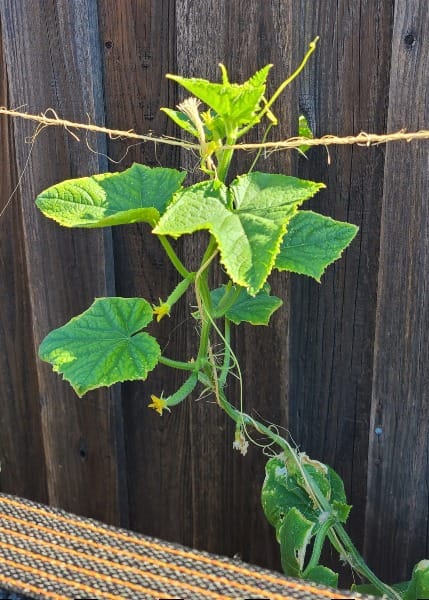
Even when the weather was not hot, the plants would drink and the system would lose volume to evaporation so ... water needed to be added. More frequently than you think. There are a few problems with this:
1) Constantly messes with nutrient concentration unless you're always pre-mixing
2) It throws the pH off, raising it in my case
3) It results in a buildup of bicarbonates, essentially salts, that are present in the tap water.
Buying distilled water and setting up a reverse-osmosis filter ($) were ruled out as possible solutions to this problem.
I originally suspected that Chlorine in the tap water might be the boogeyman but was able to debunk that with some test strips. However, this proved to be a great practice to keep tabs on pH and total alkalinity.
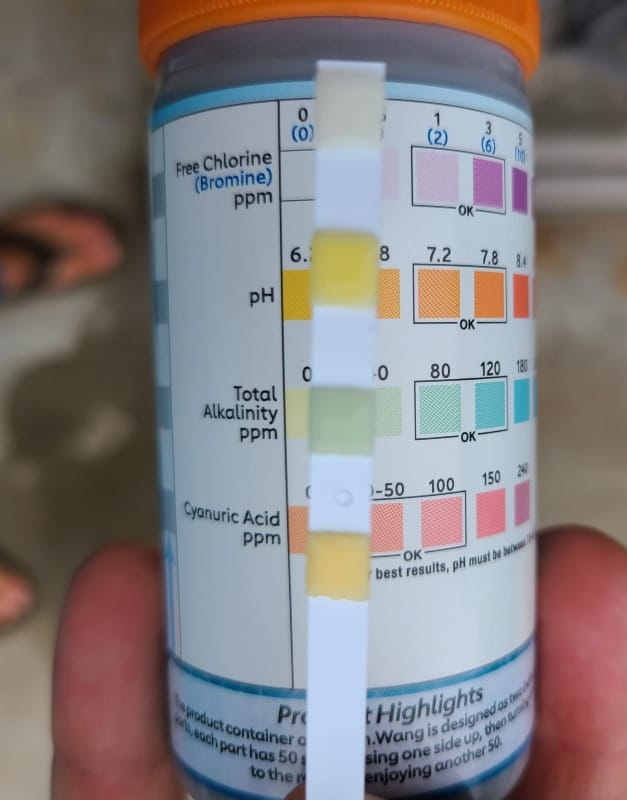
Cutting to the chase, all the buckets developed root rot, the most likely cause being those swampy buckets.
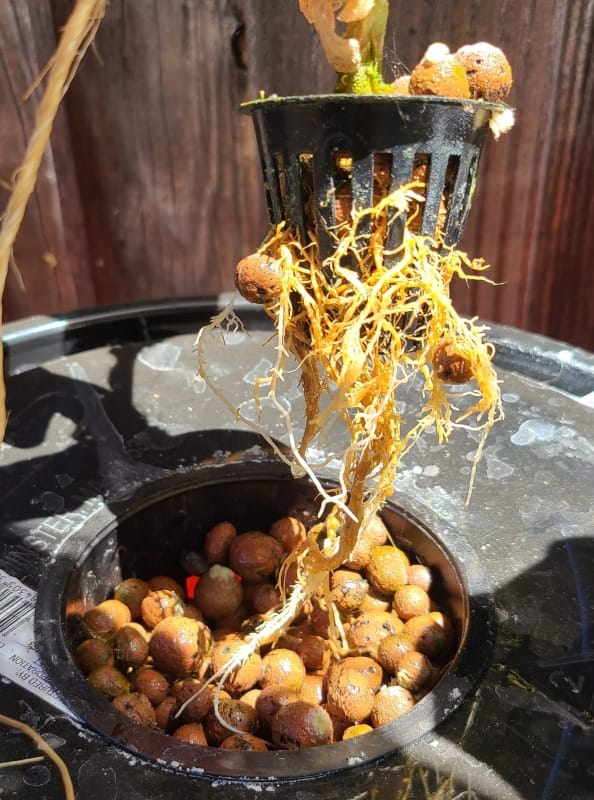
I decided to bail on the complexity of the Dutch buckets and go back to an NFT setup with a 5 gallon bucket reservoir and smaller plants. I was trying to prove that I could keep 5 gallons under control. I started experimenting with using acetic acid ( vinegar ) to regulate pH and reduce bicarbonates, and it worked to some extent. To say that I am a backyard chemist is perfectly accurate.
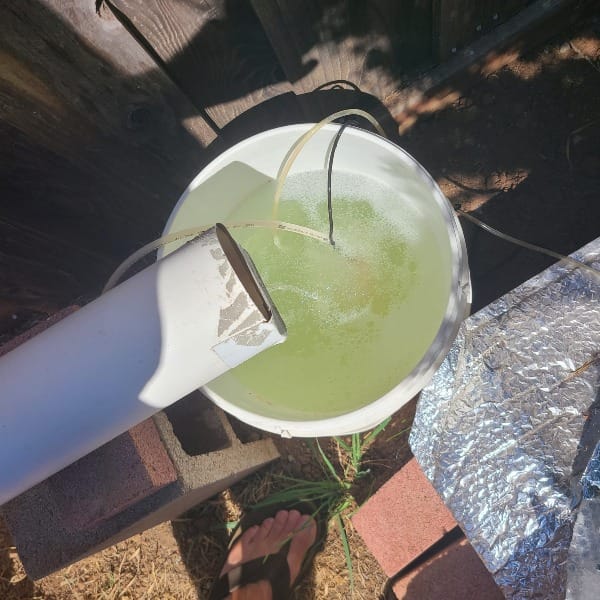
In reality the smaller volume in the bucket was probably harder to keep balanced, but it was cool that it was compact:
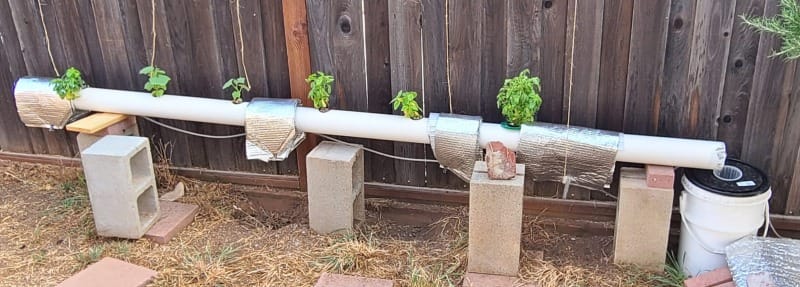
If I wasn't using the air stone the pump alone could run 24/7 on a small solar setup. The trouble with NFT is that if the pump goes off for just an hour, everything might die.
The single cucumber I had waiting as a backup seemed happy with the initial conditions:
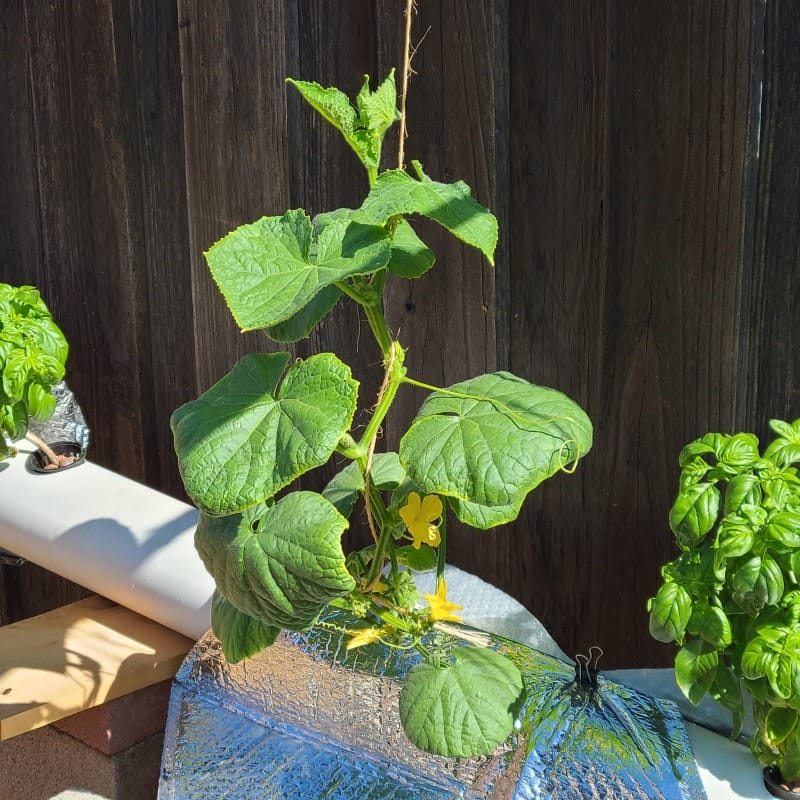
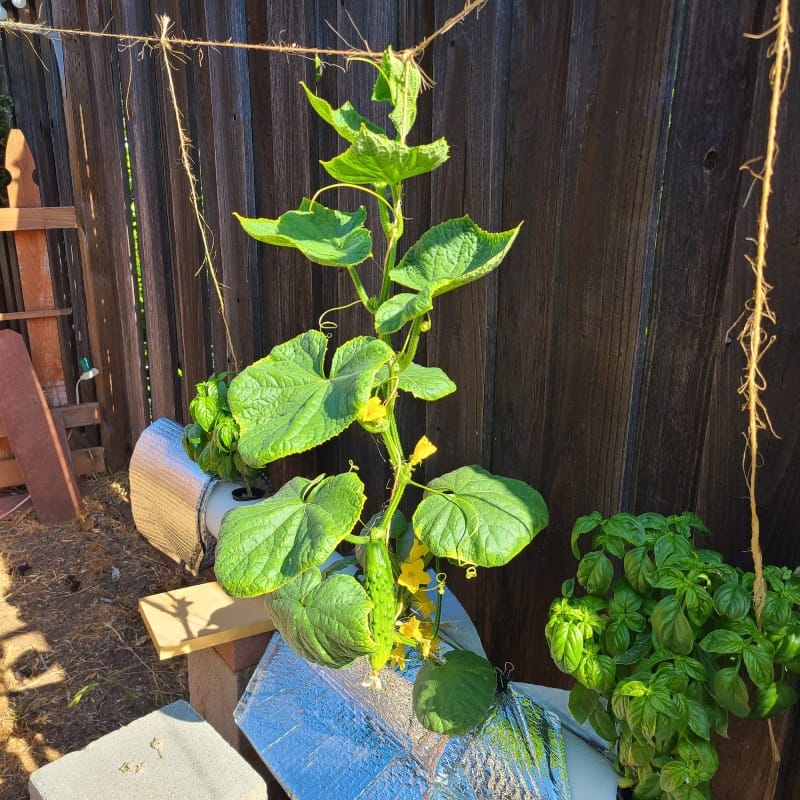
This was looking OK, but then one day I introduced some new nutrient solution that should have been balanced and perfect but instead killed everything. I was pretty frustrated.
2024 ?
Honestly I was going to give up. I told my 4 year old so and he told me I couldn't quit.
Will I strike a magical equilibrium where I reap all the benefits of hydroponics while taking advantage of as much natural light and thermodynamic regulation as possible? I would settle for keeping everything alive. Sure, I have grown a few cucumbers, but ideally the increased production would justify all the engineering, right?
This all makes dirt look pretty appealing.
